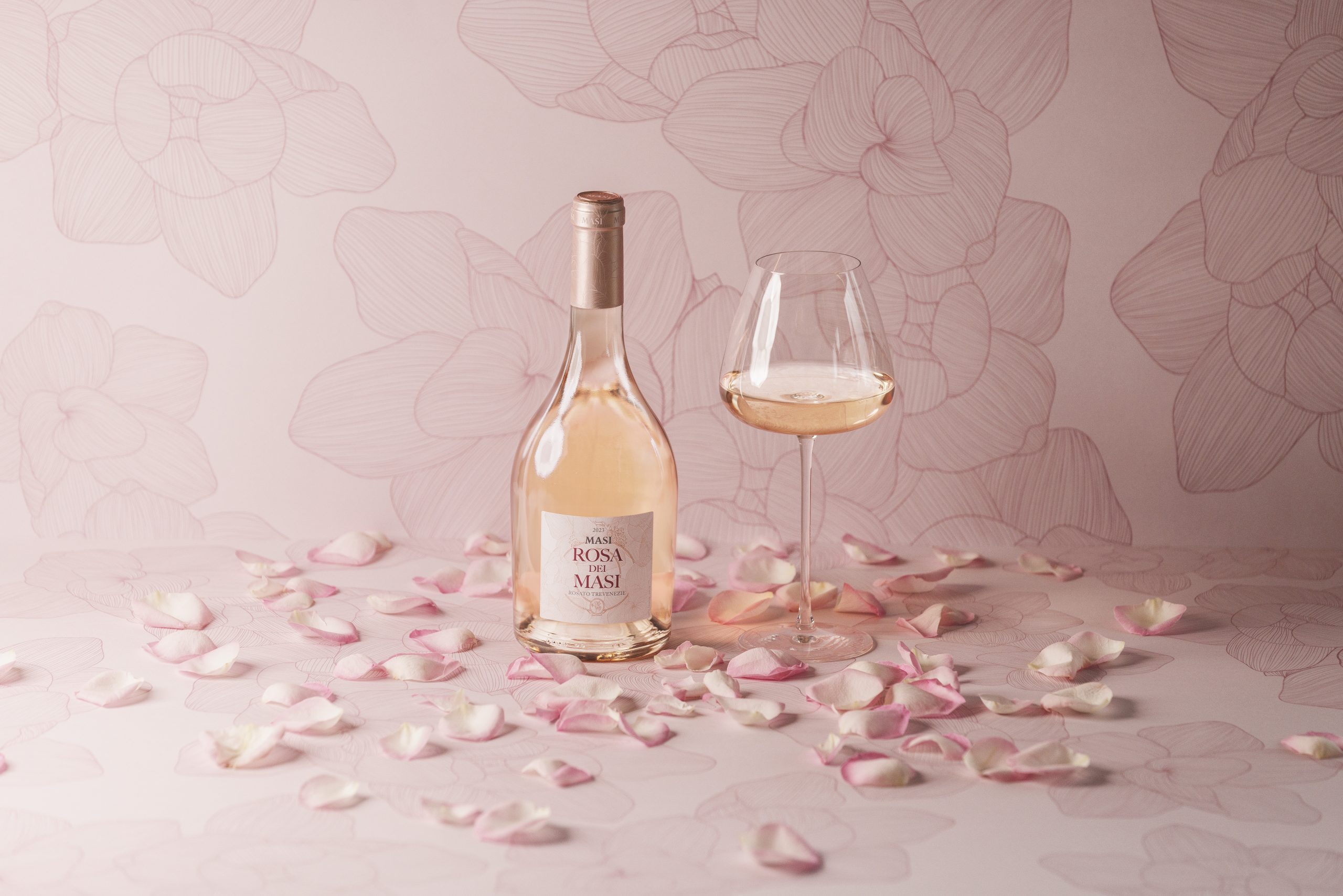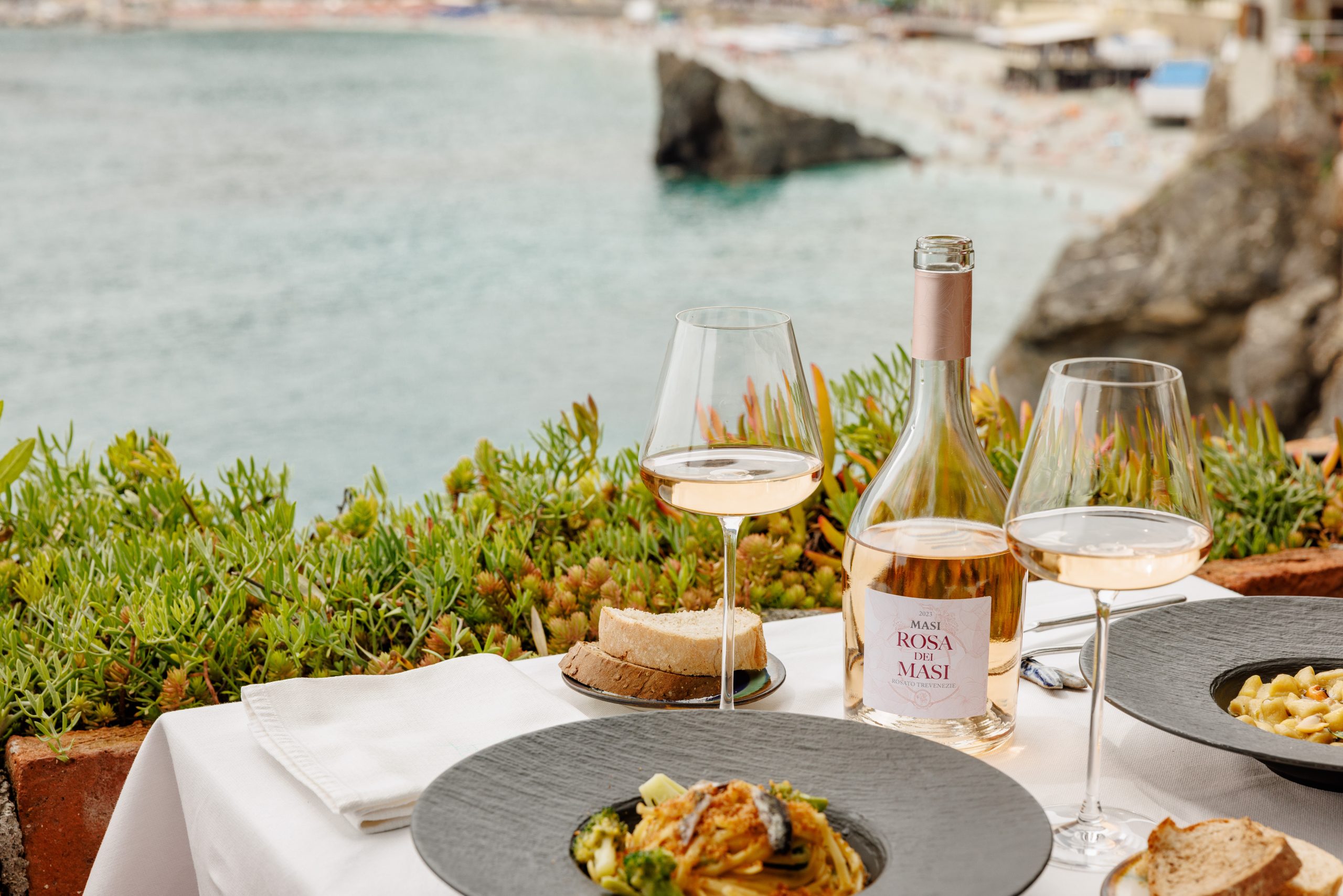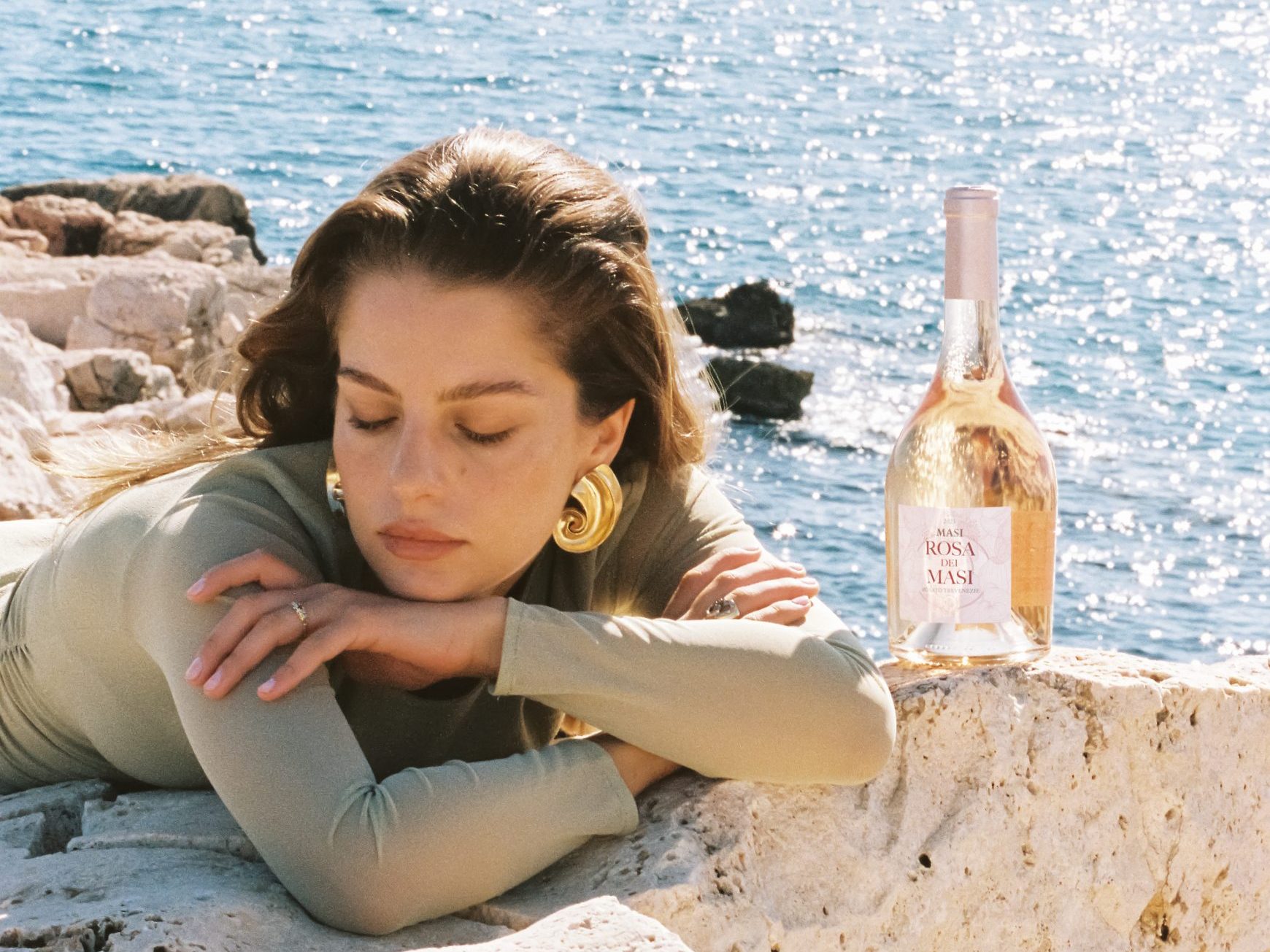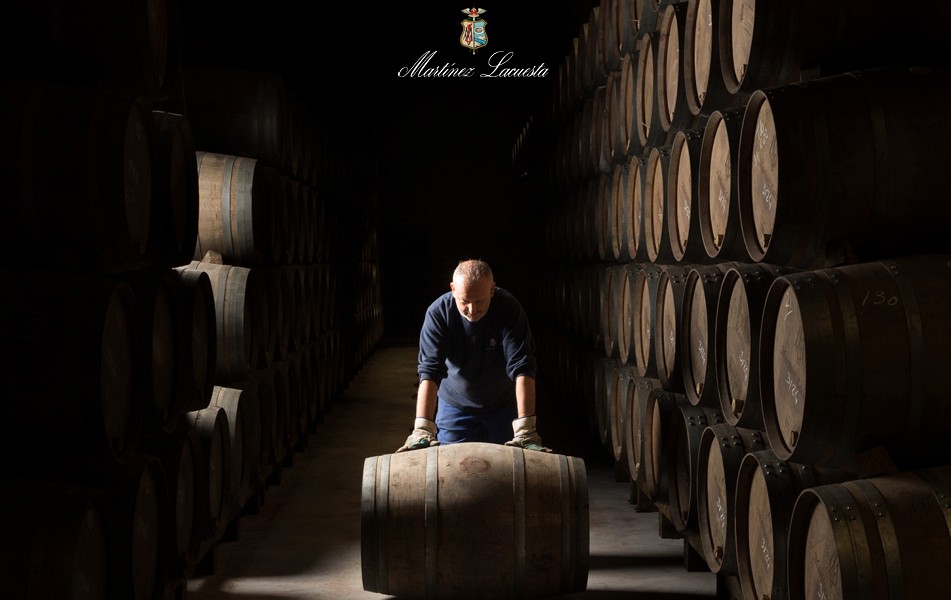Rosa dei Masi undergoes revamp to share in ‘rosé renaissance’
The team behind Rosa dei Masi 2023 explains how fresh approaches to winemaking and branding are paying dividends in the competitive market.

In the lucrative, but increasingly crowded rosé market, it can take a lot to stand out. Consumers have come to expect high quality and a luxurious brand as a minimum, while celebrity investments have created a lot of marketing noise in the sector. For producers in a region not usually associated with rosé, such as Masi in Valpolicella, the challenge is especially demanding.
Both winemaking and branding therefore require focus. “Certainly quality and sensory elements are crucial,” explains Raffaele Boscaini, marketing director at Masi. “but the potential of wine to evoke a certain lifestyle and become a status symbol is also important.”
Masi’s recent release, a revamp of its Rosa dei Masi, has therefore been an interdisciplinary project. The Masi Technical Group, covering fields from winemaking to marketing, has spent years developing the new edition. The resulting 2023 vintage is a wine that meets the producer’s 250-year-old reputation for quality while offering a modern brand to drinkers.
The craft behind Rosa dei Masi
The starting point was to develop a style rooted in the Veneto landscape, but also with strong commercial potential. “Valpolicella is in general a great land for growing grapes,” says Boscaini. “The most significant expression is historically found in the great reds, but this does not prevent interesting interpretations in the area of rosé and also white wines.”
The latest interpretation is a new one for the company, placing freshness and delicacy as central focuses. Previous vintages of Rosa dei Masi were a slightly richer, darker style made with Refosco that employed the appassimento technique for added extraction.
In the upper Valpolicella, vineyards sit at an altitude ideal for the creation of light, refreshing rosé wines. The Merlot used in Rosa dei Masi 2023, is grown up to 720 metres up the hills of the commune of Negrar. At this higher altitude, the wines maintain the acidity necessary for a refreshing rosé.
Moreover, the altitude ensures a large diurnal range. That enables, in Boscaini’s words, “incomparable aromas and sustained acidity”. It is especially vital in the wine, as he believes the great challenge of the cuvée is preserving its aromas while maintaining balance.
In the winery, too, that approach is central. Very soft pressing of the grapes at a very low temperature ensures the wine keeps its acidity and aromas, while allowing a gentle extraction of colour and tannin. The fermentation temperature is likewise cool (13-16°C) before the wine matures in stainless steel on its fine lees for 60 days.
The protective approach to winemaking maintains the delicate character developed in the vineyard. According to Boscaini, it is recognisable by its intense floral aromas, hints of red fruit on the palate and overall freshness and pleasantness.
Partner Content
A modern approach to branding
The winemaking was, however, only half the story. Rosa dei Masi has undergone a revamp that both showcases the winemaking changes and appeals to modern drinkers.
For Boscaini, the target is “the sophisticated consumer who seeks a pleasant and relaxed experience in rosé wine”. He also immediately cites a lifestyle example of how Masi wishes the new vintage to be consumed: sitting in the garden or by the sea, enjoying oysters or spaghetti with clams.

In a market whose main trendsetter is Provence, colour is a key signifier of sophistication. The Rosa dei Masi therefore comes in a clear bottle, showing off the delicate hue, somewhere between pale salmon and onion skin. The smaller label and wider bottle increase the colour’s prominence.
The label also refreshes Masi’s traditional design. Boscaini sees it in conversation with the past, but led by a modern aesthetic: “the characteristic oval of Masi’s historic labels is enriched by a profusion of rose petals drawn with a light touch of ink.”
Staking its claim to the ‘rosé renaissance’
The new approach means that Masi is better placed than ever to win its share of what it calls the ‘rosé renaissance’. However, it acknowledges that it is an uphill battle, given that rosé trends have been consistently driven by France.
“Italy itself has been less dynamic compared to other international players,” says Boscaini, “primarily the French, who have imposed themselves by conquering a large share of the market.”
The first signs, however, are very positive for the rebrand. The initial sales figures from the Italian market show the new version of Rosa dei Masi doubling sales compared to the previous version.
It is giving the team plenty of cheer about the wine’s potential, even in a crowded marketplace. According to Boscaini: “We think the rosé market has room to grow – it is still a niche market even though it is an international phenomenon – but we also think we can take some share of the existing market.”
And regardless of the international success, it will always be in favour with the team at Masi. “We love the lightness and delicacy it expresses,” he summarises, “and at the same time its suitability for positioning itself in the lifestyle sphere.”

Related news
Campari sells Averna and Zedda Piras, raising £88m




